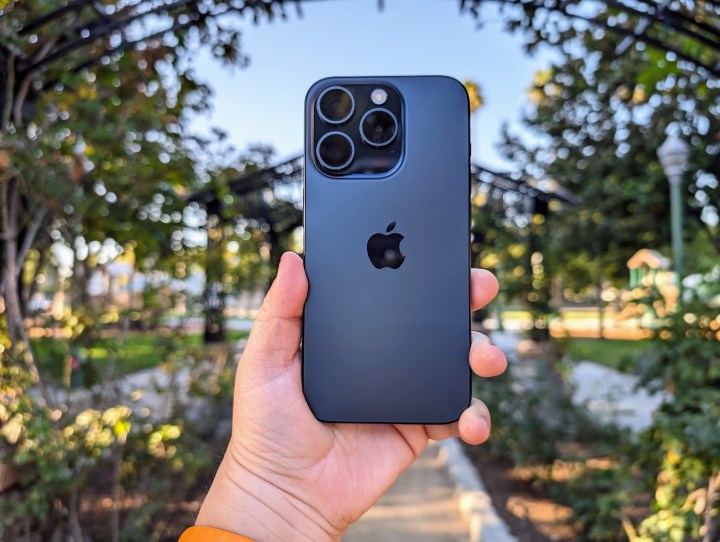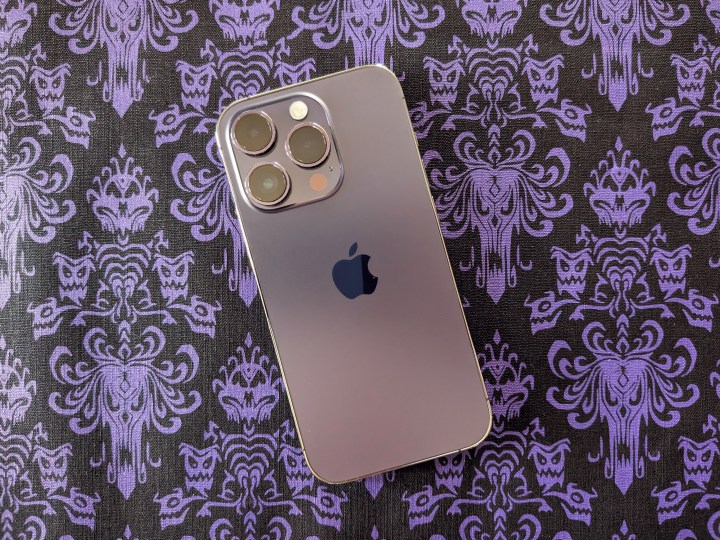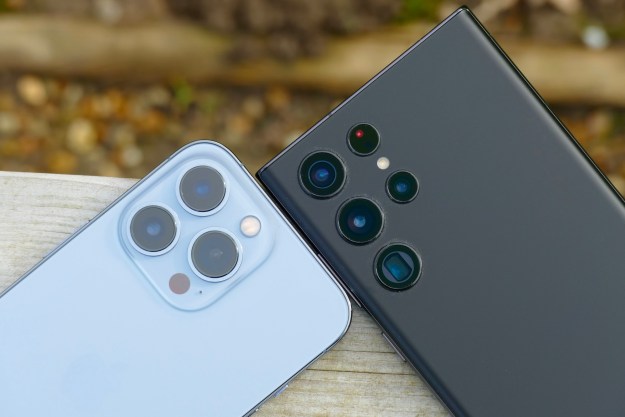
The Apple iPhone 15 Pro might look like an aesthetics-heavy upgrade to the iPhone 14 Pro, given the spotlight on its titanium build, but it also makes a ton of changes inside that can sway the appeal for power users. There’s a new 3nm chip inside, a second-generation Ultra Wideband chip for communication with nearby devices, and a healthy bunch of software-side improvements to the camera system.
- iPhone 15 Pro vs. iPhone 14 Pro: specs
- iPhone 15 Pro vs. iPhone 14 Pro: design and display
- iPhone 15 Pro vs. iPhone 14 Pro: performance and battery
- iPhone 15 Pro vs. iPhone 14 Pro: cameras
- iPhone 15 Pro vs. iPhone 14 Pro: software and special features
- iPhone 15 Pro vs. iPhone 14 Pro: price and availability
- iPhone 15 Pro vs. iPhone 14 Pro: should you upgrade?
The latest Apple flagship is smaller and lighter, but surprisingly, it doesn’t demand the customary generation-over-generation price hike. If you’ve been eyeing the
iPhone 15 Pro vs. iPhone 14 Pro: specs
| iPhone 15 Pro | iPhone 14 Pro | |
|---|---|---|
| Weight | 187 g (6.60 oz.) | 206 g (7.27 oz.) |
| Size | 146.6mm x 70.6mm x 8.25mm | 147.5mm x 71.5mm x 7.85mm |
| Screen size | 6.1 inches
Super Retina XDR OLED display Dynamic Island 460 PPI pixel density True Tone 2,000 nits peak brightness (outdoor) Ceramic Shield protection
|
6.1 inches
Super Retina XDR OLED display Dynamic Island 460 PPI pixel density True Tone 2,000 nits peak brightness (outdoor) Ceramic Shield protection |
| Screen resolution | 2556 x 1179 pixels | 2556 x 1179 pixels |
| Operating system | iOS 17 | iOS 16 (upgradeable to |
| Storage | 128GB, 256GB, 512GB, 1TB | 128GB, 256GB, 512GB, 1TB |
| MicroSD card slot | No | No |
| Processor | A17 Pro
6-core CPU 6-core GPU |
A16 Bionic
6-core CPU 5-core GPU |
| 8GB | 6GB | |
| Camera | 48-megapixel primary, 12MP ultrawide, and 12MP telephoto with 3x optical zoom rear
12MP front Smart Next-generation portraits with Focus and Depth Control Night Mode Deep Fusion Photonic Engine Apple Pro RAW |
48MP primary, 12MP ultrawide, and 12MP telephoto with 3x optical zoom rear
12MP front Smart Portrait mode with Focus and Depth Control Night Mode Deep FusionPhotonic Engine Apple Pro RAW |
| Video | HDR video recording with Dolby Vision up to 4K at 60 fps
Slow-motion video support for 1080p at 120 fps or 240 fps
Night mode Time-lapse
Log video recording
Academy Color Encoding System
|
4K video recording at 24 fps, 25 fps, 30 fps, or 60 fps
HDR video recording with Dolby Vision up to 4K at 60 fps
Slow-motion video support for 1080p at 120 fps or 240 fps
Night mode Time-lapse
|
| Bluetooth | Bluetooth 5.3 | Bluetooth 5.3 |
| Ports | USB Type C
USB 3.0 standard |
Lightning
USB 2.0 standard |
| Authentication | Face ID | Face ID |
| Water resistance | IP68
Maximum depth of 6 meters up to 30 minutes |
IP68
Maximum depth of 6 meters up to 30 minutes |
| Battery | 3,274 mAh
20W wired fast charging (50% charge in 30 minutes)
MagSafe and Qi2 wireless charging
|
3,200 mAh
20W wired fast charging (50% charge in 30 minutes)
MagSafe and Qi wireless charging
|
| App marketplace | Apple App Store | Apple App Store |
| Network support | 5G (sub-6 GHz) with 4×4 MIMO
Wi-6E Thread networking U2 ultrawide-band chip |
Wi-6 U1 ultrawide-band chip |
| Colors | Natural Titanium
Blue Titanium White Titanium Black Titanium |
Deep Purple
Gold Silver Space Black |
| Price | $999 | $999 |
iPhone 15 Pro vs. iPhone 14 Pro : design and display
- 1.
Apple ProiPhone 15 - 2.
Apple
iPhone 14 Pro
The most obvious change that Apple has to offer with the
But it’s the brushed titanium frame that really catches the attention. Titanium’s combination of material qualities has enabled Apple to create the borders on its new, top-of-the-line iPhone series that are thinner than ever before, all without compromising the phone’s structural integrity. Beneath the surface, there is a “substructure” crafted entirely from 100% recycled aluminum.
Apple explains that the strategic use of both titanium and aluminum allowed the team to achieve a delicate design balance. While titanium provides enhanced strength and durability at reduced weights, aluminum is employed to effectively regulate heat and facilitate the replacement of the back glass panel, if and when necessary.
The slimmer borders have enabled Apple to decrease the dimensions of the
As far as the display goes, well, nothing has changed. Both the phones offer a 6.1-inch Super Retina XDR display with a 120Hz refresh rate. The resolution figures are 2556 x 1179 pixels, which translates to a pixel density of 460 ppi, while the peak outdoor brightness maxes out at 2,000 nits. Even though the display tech hasn’t seen any upgrades, it’s still one of the best panels out there and also happens to be among the sturdiest, thanks to the Ceramic Shield layer.
iPhone 15 Pro vs. iPhone 14 Pro: performance and battery
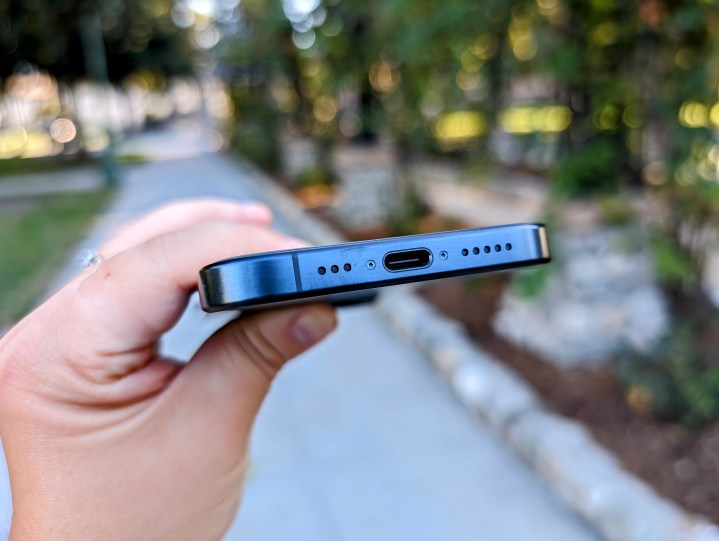
The
The processor is one area where the
It’s the GPU that truly sets the A17 Pro apart. The graphics engine is 20% faster and also enables support for hardware-accelerated ray-tracing in games — quite demanding from a resource perspective. The A17 Pro is also powerful enough to natively play console-grade games like Assassin’s Creed Mirage, Resident Evil Village, and Death Stranding.
The
iPhone 15 Pro vs. iPhone 14 Pro: cameras
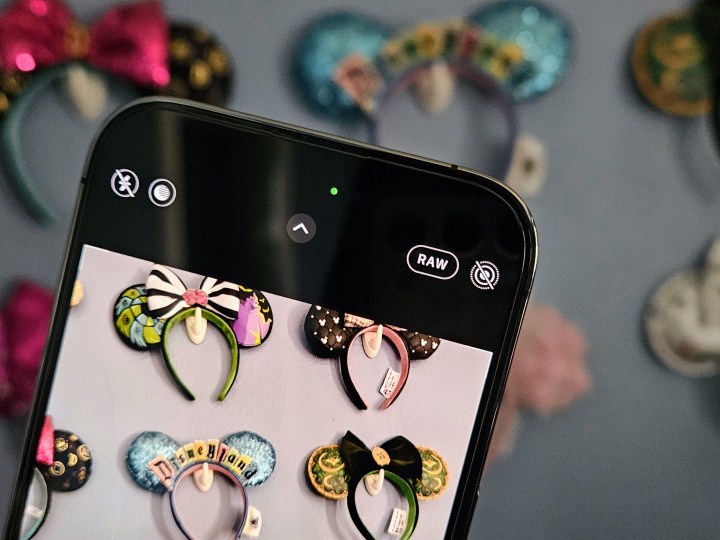
Apple hasn’t made any changes to the camera hardware on the
But there are a few enhancements for the newer phone. Despite the hardware being much the same, Apple has tuned up the software, significantly increasing performance in a few of the
The
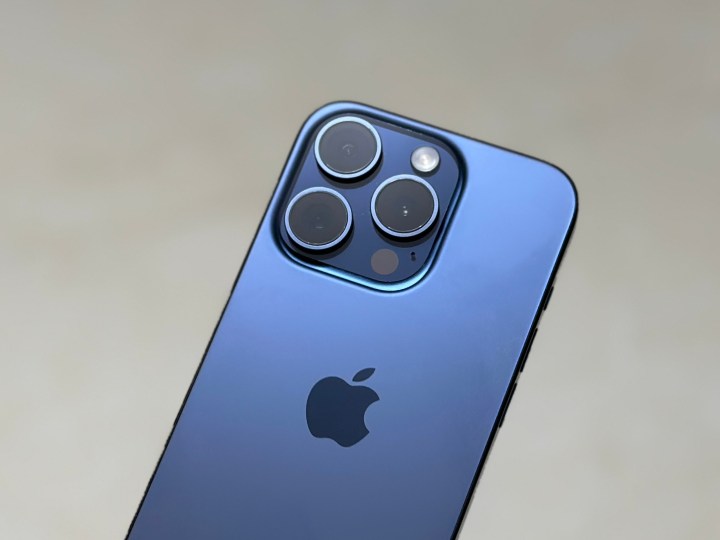
Apple has also added a cool new trick to the portrait photography system on the
For folks intending to shoot films and documentaries, the
iPhone 15 Pro vs. iPhone 14 Pro: software and special features

The most remarkable difference between the
Another notable hardware upgrade that the
The
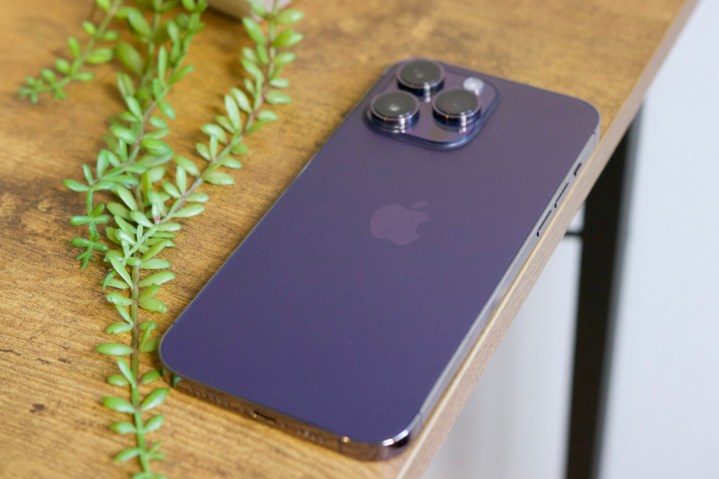
The
On the software side, the
Then we have the new Action button on the
iPhone 15 Pro vs. iPhone 14 Pro: price and availability
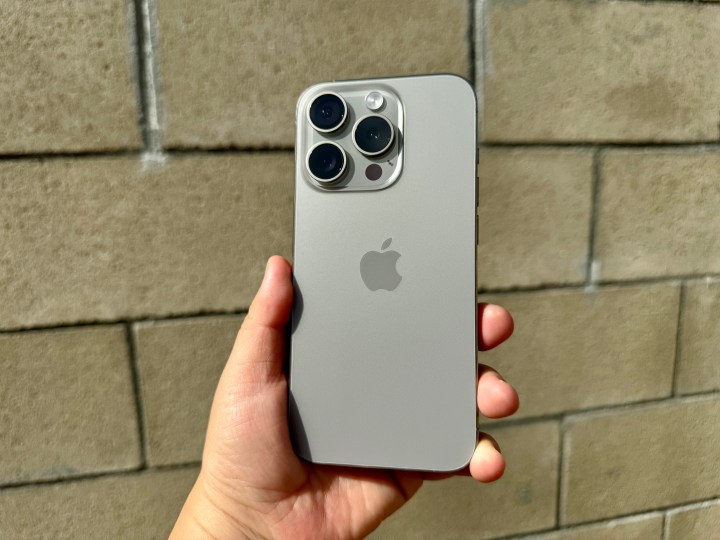
Apple hasn’t raised the price this year, at least in the U.S. market. Just like the
As far as the colors go, Apple hasn’t undertaken any ambitious experiments here, opting for the understated route instead. You get to choose between familiar blue titanium, black titanium, and white titanium shades. The only fresh tone this year is the natural titanium color, which actually looks like a lighter tone of the starlight color on some Macs.
The
iPhone 15 Pro vs. iPhone 14 Pro: should you upgrade?

Now we get to the $1,000 question: should you upgrade your
Apple’s A17 Pro chipset is capable of a lot, especially from a gaming perspective. The subtle camera upgrades are nice (especially the improvements to Portrait mode), the titanium design is a welcome upgrade, and getting USB-C on an iPhone is lovely to see.
But the thing is, the
Editors' Recommendations
- You’re all wrong — 60Hz on the iPhone is fine
- This app put iMessage on my Android phone — and it blew me away
- The best personal finance apps in 2023 for iPhone and Android
- There’s only one reason I’m still using an iPhone in 2023
- I compared two of the year’s best phones in an extreme camera test

